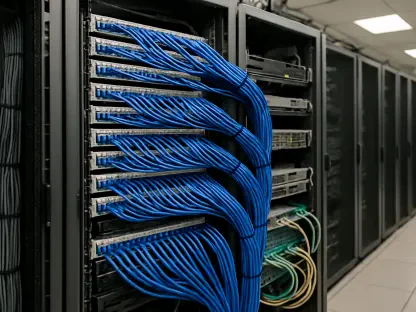Imagine a vast ocean where ships, buoys, and offshore structures remain seamlessly connected, exchanging critical data in real time despite the isolation of open waters—a scenario once thought impossible due to the limitations of traditional communication networks beyond coastal zones. This vision has now become a reality through a groundbreaking achievement by Korean researchers at the Electronics and Telecommunications Research Institute (ETRI). They have developed and successfully verified the world’s first Maritime Internet of Things (MIoT) communication network, a system designed to tackle the persistent challenge of reliable connectivity at sea. This innovation marks a significant milestone in maritime technology, promising to transform how data is managed across the marine environment. By bridging the digital gap in one of the most disconnected regions on Earth, this network sets a new standard for safety, efficiency, and security in maritime operations, paving the way for a smarter and more connected ocean.
The MIoT network operates on a public 450 MHz band specifically designated for maritime communication, ensuring long-distance, low-power connectivity over vast stretches of water. Field trials along Korea’s West and South coasts have demonstrated its impressive capabilities, connecting up to 30 devices simultaneously across distances of 35 kilometers. The infrastructure, built to withstand harsh marine conditions, includes base stations at strategic lighthouse locations and terminals at ports and buoys, enabling the transmission of essential data like GPS coordinates and environmental readings every few minutes. This system stands apart from land-based Narrowband IoT solutions by catering specifically to the unique demands of remote and dynamic ocean settings. Its ability to maintain consistent communication in challenging conditions highlights a major leap forward, offering a reliable lifeline for vessels and facilities that were previously cut off from real-time information.
Transforming Maritime Operations and Beyond
This pioneering technology brings a host of practical applications that enhance maritime safety and operational efficiency through continuous monitoring and data exchange. From tracking small vessels to managing aquaculture systems and detecting floating debris, the MIoT network supports a wide range of civilian uses while also bolstering national defense by enabling real-time surveillance of maritime zones and identifying unauthorized vessels. Its capacity for emergency response coordination further underscores its value in critical situations. Designed for low-cost, low-power devices, the system is ideally suited for the expansive and unpredictable nature of the sea, ensuring that even the most remote marine assets remain connected. Plans are underway to expand pilot networks across Korea’s coastal regions by 2026, with the ultimate goal of achieving nationwide coverage in the years following 2030, aligning with evolving global standards for maritime connectivity.
Reflecting on this achievement, the successful verification of the MIoT network proved its feasibility and necessity in modern maritime contexts, addressing a long-standing connectivity gap that once hindered safety and efficiency at sea. The diverse applications, spanning from civilian operations to strategic defense, demonstrate the system’s far-reaching impact on how marine environments are managed. Looking ahead, stakeholders can anticipate further integration of such technology into global maritime infrastructure, with an emphasis on collaboration to refine standards and expand coverage. The next steps involve scaling up the network’s reach while adapting to emerging challenges, ensuring that the seas remain not only navigable but also digitally empowered for future generations. This milestone serves as a foundation for smarter oceans, urging continued investment in innovative solutions that prioritize both security and sustainability in maritime domains.









